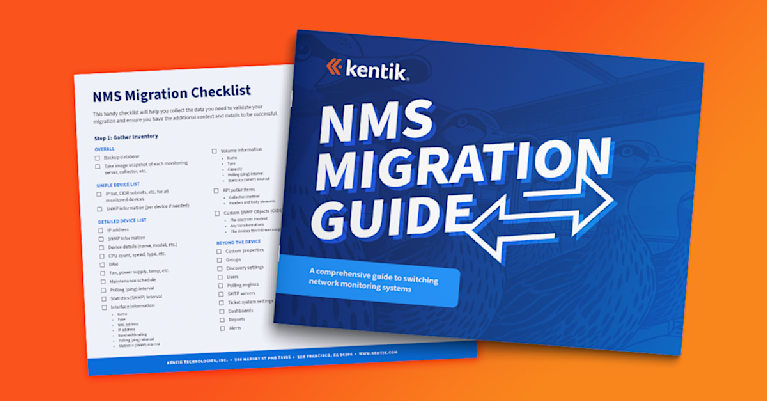Mastering Effective Database Monitoring: Choosing the Best Tools for Optimal Performance
Databases are a necessary part of business operations, and database monitoring helps you keep track of your databases and oversee various aspects of their functioning, including their performance, availability, security, and usage. It also helps you maintain, regulate, and optimize your database operations and troubleshoot issues.
Quantifying system performance through metrics such as throughput, latency, response time, and error rates provides you with insights that can help you optimize your database’s efficiency. Analyzing frequent queries within your databases can lead to better caching or materialized views, and tracking performance issues can also help identify root causes and prevent further degradation.

Moreover, monitoring your database and keeping track of its logs can help you see how your database is performing over time. This is invaluable for scaling, capacity planning, and system upgrades within your infrastructure.
In this article, you’ll learn about database monitoring and some tools you can use to help you optimize database performance, prevent downtime, and ensure data integrity.
What is Database Monitoring?
Database monitoring is the continuous process of assessing the health, performance, and availability of your database systems. It involves tracking various metrics such as query speed, response times, error rates, and resource usage to ensure that your databases operate efficiently and effectively. This process helps identify performance bottlenecks, potential system failures, and security vulnerabilities before they cause significant disruptions.
Effective database monitoring provides insights into how data is accessed and manipulated, enabling organizations to optimize operations, maintain data integrity, and make informed decisions about scaling and upgrades. The ultimate goal of database monitoring is to enhance the reliability, speed, and security of database services, to support seamless business operations and superior user experiences.
Why Do You Need Database Monitoring?
Any data-driven business is built upon the continuous collection and storage of data as well as the insights derived from it. Whether you interact with this data in real-time or periodically, your database is the foundation of your infrastructure and, as such, requires regular maintenance to ensure efficiency and optimal results.
Lack of database monitoring leaves you unaware of its day-to-day operations as well as potential bottlenecks or failures. For example, if you don’t have information on your database’s current capacity and performance, you can’t adequately manage new data demands.
How Does Database Monitoring Work?
There are several ways to track and access your database performance, including performing manual log checks and queries, instrumenting your database to collate data, and utilizing specialized tools. Let’s take a quick look at each method.
Database Interface
Several database solutions, such as PostgreSQL, provide logs and detailed information about your database’s performance and operations. When you access your solution’s user interface (UI), you can manually check the logs of its operations as well as various performance metrics, including system status, query performance, and resource utilization.
While this method provides direct access to real-time data, it can be labor-intensive and may not scale well for large or distributed database environments.
Remote Queries
Remote queries are a powerful method for database monitoring, especially useful in environments with distributed or cloud-based databases. This technique involves using specialized scripts or integrated monitoring tools to query a database’s performance and operations from a remote location. This not only allows you to bypass the database’s native user interface but also supports the execution of parallel queries across multiple databases, enhancing the efficiency of monitoring tasks.
Technologies and Protocols Used for Remote Queries
-
SQL over JDBC (Java Database Connectivity):
- JDBC provides a Java-based API that connects and executes queries against the database. This standard API ensures that Java applications can interact with a variety of databases without requiring database-specific code, making it ideal for environments that use multiple database systems.
-
ODBC (Open Database Connectivity):
- Similar to JDBC, ODBC is a standard API for accessing database management systems (DBMS). What makes ODBC unique is its language-agnostic approach, allowing it to support any language that can use the ODBC interface, not just Java. This makes it incredibly versatile for remote querying from various client applications.
-
SNMP (Simple Network Management Protocol):
- While traditionally used for managing devices on IP networks, SNMP can also be extended to monitor database performance metrics. It utilizes a “manager-agent” model where the manager can remotely query agents running on database servers for performance data.
-
RESTful APIs:
- Many modern databases and monitoring tools offer RESTful APIs that allow developers to perform remote queries and retrieve data in a straightforward, platform-independent manner. These APIs are particularly useful for web-based applications and services needing to interact with databases over HTTP.
-
GraphQL:
- A newer technology that allows clients to request exactly the data they need. Unlike REST, which requires loading from multiple URLs, GraphQL queries access all the data your app needs in a single request, which can be very efficient for complex systems with multiple database interactions.
Benefits of Using Remote Queries
- Scalability: Remote queries allow monitoring at scale, particularly in distributed database environments. They enable administrators to manage multiple databases from a central point without direct interaction with each database’s UI.
- Flexibility: By using standard protocols like JDBC, ODBC, or more modern APIs, remote queries can be adapted to almost any database environment. This flexibility is crucial for hybrid systems that combine on-premises and cloud-based solutions.
- Real-time Monitoring: Remote queries facilitate real-time data retrieval, which is vital for immediate detection and resolution of performance issues or anomalies.
Incorporating remote queries into your database monitoring strategy enhances your ability to maintain robust, efficient, and secure database operations across diverse and geographically dispersed infrastructure.
Backup Analysis
Regular database backups are essential for data protection and disaster recovery. Backups can also help you perform more strenuous queries and tests without accessing your production database.
In this method, you analyze backup stores of logs and performance metrics to ensure data integrity and investigate trends in resource utilization and database availability.
Using backups can be a form of nonintrusive monitoring as your production database environment cannot be impacted. However, depending on your backup frequency, there is a lag between live logs and performance, and the backups recorded.
Database Monitoring Tools
Dedicated database monitoring tools offer a specialized experience for monitoring your database performance and health. Depending on the specific tool, you could have a solution that is integrated with your database or a tool that utilizes instrumentation to collate the necessary data for analysis and monitoring.
Database monitoring tools usually feature a centralized dashboard that allows for in-depth trend analysis and alerts based on user-set triggers.
Why You Need Monitoring Tools
As mentioned earlier, investing in an effective database monitoring tool offers numerous advantages, including reduced costs and easier maintenance. Here are a few reasons why you should prioritize database monitoring tools.
Reduces Database Crashes and Bottlenecks
Database monitoring tools can help you reduce crashes and bottlenecks in your infrastructure by continuously tracking performance metrics and trends for potential issues or anomalies. With alerting features enabled, abnormal database usage, network traffic, or specific errors can trigger SMS or email notifications. This helps you proactively resolve issues and minimize downtime in your systems.
Ensures Data Integrity
Corruption of your data and the degradation of your data storage can go unnoticed, especially for data stores that are not frequently accessed. Database monitoring tools can help you maintain the data integrity of your infrastructure by monitoring and setting alert triggers for anomalies, unauthorized access attempts, or data corruption. These triggers help ensure the accuracy and reliability of data stored within your database.
Makes Troubleshooting Easier and More Efficient
As mentioned previously, database monitoring tools can provide you with real-time visibility into your system’s performance and health. However, when your metrics and logs are saved over time, you have a backlog of data with which to analyze, create trends, and quickly identify the root cause of your issues.
Resolving your database issues is easier when you have an understanding of the optimal operations and can readily pinpoint which aspects of your database are malfunctioning at any given time.
Reduces Costs
Reducing system crashes and downtime directly improves your infrastructure’s bottom line. More efficient troubleshooting reduces the expenses related to staffing and resources needed to address emerging issues. Proactively optimizing your database performance and resource utilization leads to decreased costs thanks to better resource allocation, reduced downtime, and improved productivity.
Maintains Critical Components
Databases are critical components of most organizations’ infrastructure. Database monitoring tools can help maintain business continuity by preventing critical crashes and errors that can lead to data loss and cause you to fail to meet your service level agreements.
Enhances User Experience
A well-monitored database environment leads to improved database performance, response times, and reliability. This translates to a better user experience, increased satisfaction, and, generally, improved business outcomes.
Effective Monitoring Tools
Following are a few database monitoring tools known for their beneficial features and effectiveness in maintaining and managing database infrastructure:
SolarWinds
SolarWinds is an observability and IT management software company with a growing number of products, including database performance monitoring solutions. Its Database Performance Analyzer (DPA) integrates with a variety of databases, such as Microsoft SQL Server, Oracle, MySQL, and MariaDB. It also supports cross-platform databases across cloud, virtual, and on-premise environments.
SolarWinds also offers several machine learning (ML) features, enabling you to better predict and optimize anomaly detection and response time analysis.
Database Monitoring vs Network Performance Monitoring (NPM)
In the field of network performance monitoring (versus database monitoring or database performance monitoring), Kentik NMS offers a more modern alternative to SolarWinds NPM.
dbWatch
dbWatch is a database management and monitoring platform designed to simplify the simultaneous administration of diverse database infrastructures. It offers a centralized solution for your monitoring, management, and reporting needs, enabling you to optimize and troubleshoot database performance and operations globally.
SQL Sentry
Acquired by SolarWinds, SQL Sentry is a performance monitoring and optimization platform specifically designed for Microsoft SQL Server environments. It provides deep insights into SQL Server performance, query execution, and resource utilization, allowing you to resolve bottlenecks and set automated responses to specific conditions.
Paessler PRTG
Paessler PRTG is a generalized monitoring solution for many kinds of software infrastructure. It offers distributed monitoring, alerts and notifications, and highly customizable reporting to help you monitor the health and performance of your network devices, traffic, applications, services, and other infrastructure.
Datadog
Datadog offers cloud monitoring as a service, enabling you to manage the monitoring of servers, databases, tools, and services with an attached data analytics platform based on software-as-a-service (SaaS). Its monitoring product can instrument systems of your choice, automate responses and actions, and provide extensive visibility into IT infrastructure with a wide range of available integrations.
Grafana
Grafana is an open source observability platform that supports database monitoring through integrations and custom instrumentation with various data sources, including popular databases such as MySQL, PostgreSQL, and Microsoft SQL Server. Grafana is a composite solution that lets you create customizable dashboards, visualizations, alerts, and reports to monitor your database performance metrics, query execution times, and resource utilization in real time.
Tips for Selecting a Database Monitoring Tool
When selecting a database monitoring tool, there are several things you need to consider:
- Agentless solutions: Agent and agentless monitoring have their pros and cons for your infrastructure. In this context, agents are third-party scripts or software that are installed within your database system to collate data. Agentless solutions are less invasive because they utilize APIs or network protocols to access your system. This minimizes the overhead within your system and reduces the attack surface, improving security. However, agentless monitoring offers less data than agent monitoring and is dependent on network traffic for monitoring.
- Resource consumption: Before choosing a database monitoring tool, make sure it has low CPU and resource requirements. Resource consumption can have a significant impact on the performance of your database.
- Real-time monitoring: Continuous real-time monitoring within your database environment is important, especially in business domains where high fault tolerance is needed and significant downtimes can be detrimental (e.g., financial and health sectors). Tools that can monitor incoming SQL queries in real time enable you to promptly detect and address performance issues or security threats.
- Easy-to-use interface: A platform that enables you to query and visualize important database metrics immediately is always preferable as it improves your user experience and reduces unnecessary confusion. Make sure you select database performance monitoring tools with easy-to-use interfaces and visualizations, such as charts and graphs. This enhances your organization’s ability to correlate data and quickly identify trends or anomalies.
- Real-time analysis of bottlenecks: A good database monitoring tool provides you with full visibility into your database operations. This helps you efficiently track and troubleshoot slow or failed queries and other database issues that can lead to bottlenecks and downtime within your infrastructure.
- Log analysis: Database logs provide critical information regarding database operations. Make sure that you choose tools that support database log analysis to gain deeper insights into your database behavior, troubleshoot issues, and identify optimization opportunities.
- Customizable monitoring dashboard: The monitoring tool you select should provide a customizable dashboard, enabling you to personalize the monitoring experience according to your particular needs.
If you keep these tips in mind, you’ll be well on your way to choosing a database monitoring solution that satisfies your requirements for monitoring, reduces overhead, and optimizes the performance of your database systems.
Conclusion
Database monitoring is a critical aspect of managing and maintaining a database. It helps ensure that your databases are running efficiently and that your data is accessible and secure. In this article, we explored a variety of ways to monitor databases and reviewed some popular database monitoring tools.
If you’re looking for a monitoring and observability solution specifically for today’s complex hybrid and multicloud networks, check out Kentik, the network observability platform. Kentik enables you to easily visualize all types of network traffic and detect and mitigate anomalies in your network, such as distributed denial-of-service (DDoS) attacks. To see how Kentik can bring the benefits of network observability to your organization, request a demo or sign up for a free trial today.


